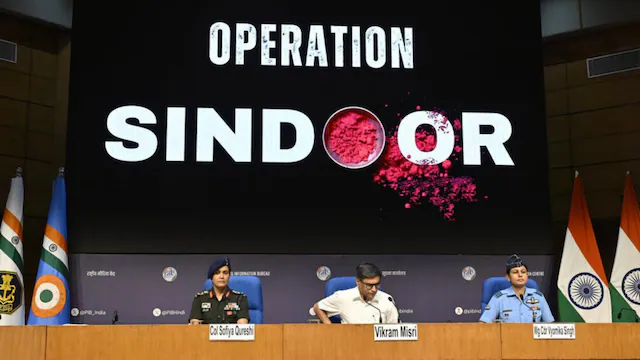Op Sindoor was not about seizing ground. It was about shaping the future balance of power.
In India’s long and proud military history, the 1971 war has stood as the benchmark of strategic triumph. India liberated Bangladesh, decisively defeated Pakistani forces in the east, and captured over 90,000 prisoners of war. It was a political and military earthquake. But there was one thing India did not do in 1971. It did not break through on the western front. It did not penetrate into Pakistan’s heartland or shake Rawalpindi’s confidence in its military dominance.
That remained untouched. Operation Sindoor changed that equation. In just four days, India not only responded to a crossborder terror attack, it launched a military campaign that struck deep into Pakistan’s western military core. Indian fighter jets operated only three kilometres from Pakistan’s General Headquarters in Rawalpindi. Indian missiles hit key facilities in Punjab. The attacks exposed critical blind spots in Pakistan’s defences. And the Pakistan Air Force failed to contest the skies. India established total air dominance. On 10 May, Pakistan was naked and exposed, having lost complete control of its sky.
The Indian military demonstrated a successful transition to a long-range precision strike capability. What unfolded was not just tactical dominance, but a validation of long-term investments in readiness, innovation, and doctrine tailored for modern warfare. This was not an escalation. It was a message. Unlike in 1971, India was not operating within limited objectives focused on the east. It struck west, at the very centre of Pakistan’s military infrastructure. And it did so without triggering fullscale war or violating international norms.
This was modern precision warfare, executed with Indian platforms, Indian doctrine, and Indian resolve. For years, Pakistan had relied on its nuclear doctrine to create a shield against deep Indian retaliation. That shield failed. Operation Sindoor underscored the strategic utility of force and exposed the hollowness of Pakistan’s reckless nuclear innuendos. India’s strikes remained below the nuclear threshold yet reached further and hit harder than any previous engagement. The idea that Pakistan could escalate at will without consequence was dismantled.
The success of Operation Sindoor was also a product of India’s defence transformation. This was a war fought with indigenous systems. Akash air defence batteries, BrahMos missiles, Indian ISR platforms, loitering munitions, and joint force communication networks—all proved decisive. India’s ability to project power and conduct complex tri-service operations without dependency on foreign suppliers was clear. In contrast, Pakistan’s military leaned heavily on Chinese technology and doctrine.
From drones to air defence, Chinesesupplied systems failed to detect, deter, or counter India’s tempo. This was not just a victory over Pakistan. It was a battlefield verdict on Chinese weapons. They were outmatched, outdated, and overwhelmed. The execution of Sindoor also revealed a level of civilmilitary synergy rarely seen in modern conflict.
Political leaders gave clear direction. Military commanders translated it into rapid, calibrated action. Escalation was avoided not through caution, but through control. India showed the maturity of a power that understands both restraint and resolve. And the effects have rippled beyond the battlefield. Pakistan’s deterrent credibility has been damaged. China, watching closely, now sees a different India, one capable of swift, punitive, and multi-domain operations, and one unwilling to be held hostage to the false logic of escalation dominance. The message was unmistakable. The 1971 war remains a nation-defining moment. It created a new strategic reality. But it was a war of territory and humanitarian necessity. Operation Sindoor, by contrast, was a war of deterrence, strategic depth, and technological dominance. It struck at Pakistan’s geopolitical centre of gravity. It reached places 1971 never could, not only in geography, but in strategic consequence.
This is why Operation Sindoor must be recognized as India’s most complete military victory since 1971. It broke Pakistan’s assumption of impunity. It validated decades of Indian defence reform. It showcased Indian innovation and jointness. And it rewrote the strategic rules of engagement in South Asia. In just four days, India demonstrated that it can respond with speed, precision, and overwhelming force. Operation Sindoor was not about seizing ground. It was about shaping the future balance of power. It was not just a military operation. It was a statement of national capability and will. And that statement may define the next fifty years of deterrence more than any moment since 1971.
Lt. Gen. Raj Shukla (Retd.) is former Commander, Army Training Command, Indian Army. John Spencer is the Executive Director of Urban Warfare Institute and world-renowned military scholar.







